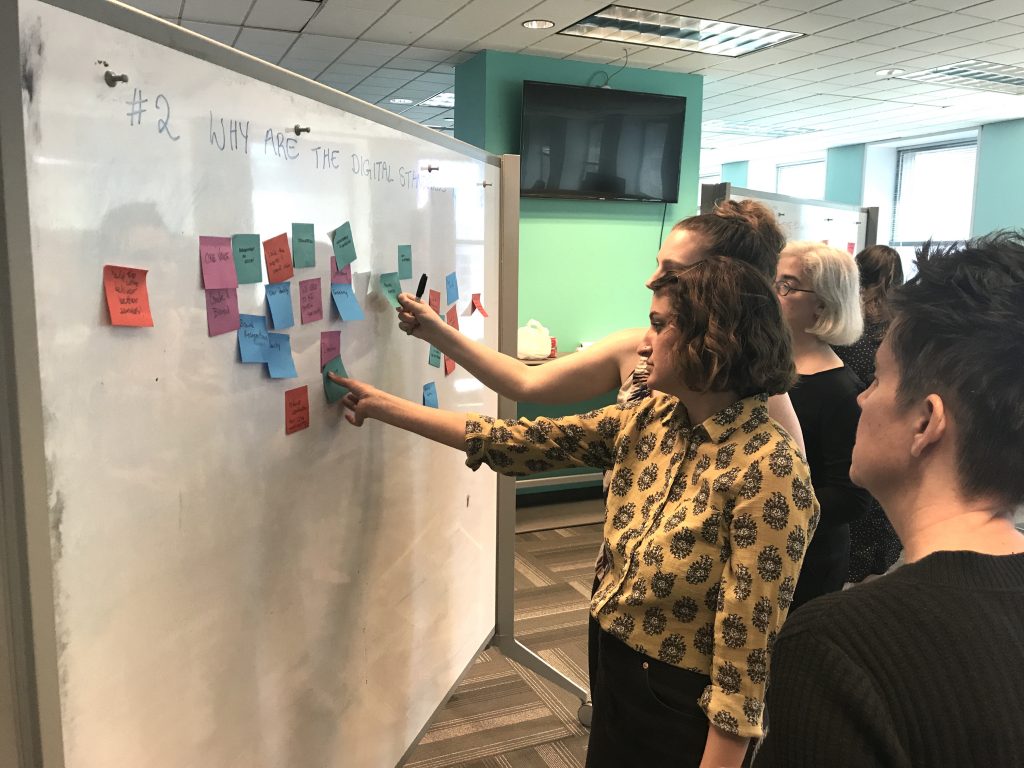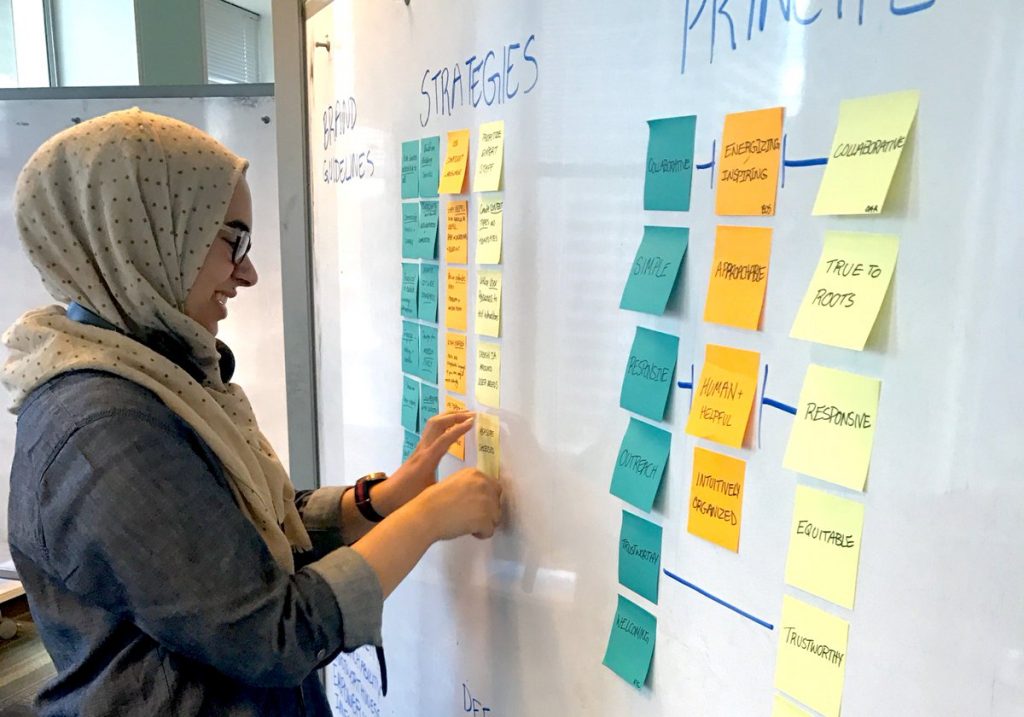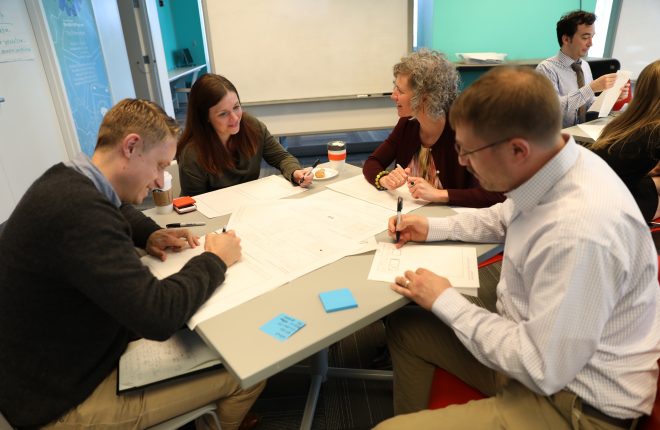Hanya Moharram (Design strategy fellow) and Priya Tirtha (User experience design fellow) are writing this week to describe what role designers can play in tackling complex public sector digital service challenges.
Everyone interacts with government at various points in their lives. You might need to apply for a street permit, enroll in a public-assistance program, attend a town hall meeting, or pay a utility bill. Let’s assume your instinct is to go online. Your path to find the information you require might be a long and circuitous one.
The City’s digital footprint is massive and fragmented. City content can be out-of-date, non-existent, inaccessible, duplicative, and/or difficult to locate. If you do find the information you need, it can be presented in a way that leaves you asking questions—unable to take clear action.
Why is the public’s experience with the City’s digital presence confusing when there are many dedicated and hard-working public servants?
Complex digital service challenges
Since joining the team as fellows, we’ve come to understand some of the complexities of this work environment. Below are a few.
- Change is hard to manage within massive organizations, especially those delivering essential services to the public, like government. The digital landscape is always evolving and resources for staying up-to-date can be scant. As administrations come and go, priorities and initiatives can reverse or shift. And people’s needs evolve based on pressing political, socio-economic, and environmental factors. These realities make it difficult for government (and any large organization) to keep up and adapt to change while serving constituents without disruption.
- There are more than 60 City departments and each department addresses a broad range of public needs. The Department of Revenue, for example, delivers different services from the Office of Diversity and Inclusion, Prisons, and the Streets Department. What does it mean to create a consistent public experience when the service providers are so different from each other?
- Philadelphia is a historic city. Many services reflect pre-digital sensibilities where silos of knowledge drive fragmented problem-solving. As result, service experiences feel cumbersome to both front-line staff and the public and inconsistencies abound from one City service to the next. If the back-end is fragmented, it’s no surprise public-facing experiences are too.
Collaborating with City colleagues
ODDT’s goal in redesigning phila.gov is to decrease confusion for the public by creating a centralized platform—where you can easily find information pertaining to City services. However, it’s not just about the end-user. In order to do this redesign work well and to work through the fragmentation on the back-end in sustaining ways, we must design with and alongside colleagues across government for two main reasons:
- While we bring design knowledge, City colleagues provide service-specific subject matter expertise and valuable working-inside-government experience. Without their collaboration and insights, our design work has limited value.
- The design system we create, the content management system (CMS) we administer, and the resources we offer as training and support must enable workflow for those creating and updating design and content on the new phila.gov; otherwise, City content will remain out-of-date and hard to access.
This brings us to one of our core design beliefs: thoughtfully designed employee experiences lead to equally thoughtful end-user experiences.

Enabling thoughtful experiences
Design is process, and our design process can catalyze digital service transformation if it’s collaborative and honors our City colleagues’ experiences, perspectives, and domain expertise.
What does that look like in practice?
- Understand: Before we design a solution, we seek to understand the needs, motivations, and behaviors of those who not only access and use the City’s digital services, but also, those who deliver the services, like our City government colleagues.
- Design: Once we uncover people’s needs and current-state behaviors, we collaboratively design strategies and prototypes, which could include wireframes of an interface or workflows that define content creation and approval processes.
- Test and build: Then we pilot and test the solutions, learn what works and doesn’t, refine, and build iteratively.
From theory to practice
As Digital Transformation Fellows, we’re working on two specific projects which bring to life some of these design processes inside the City of Philadelphia. They are: 1) creating www.phila.gov’s news and events system and 2) defining the strategy behind the City of Philadelphia’s digital standards.
Priya has been developing designs to improve the way Philadelphians digitally access and experience news, service updates, and events content on the new phila.gov—better connecting the public to essential, time-sensitive City information. Part of that work includes convening communication professionals across government to codesign the back-end workflows that support the public-facing experience. It also includes reviewing wireframes with key City content editors and creators to get a sense of what’s doable and sustainable.

The City of Philadelphia Digital Standards is a digital resource, comprised of City-specific content, design, and development guidelines, that helps City employees and vendors create quality digital experiences for/with the public. Hanya is connecting the different guidelines together under one foundational strategy, which will focus ODDT’s digital standards work moving forward. In order for this strategy to be sustaining, Hanya interviewed ODDT and City employees to get a sense of how they’ve been using the standards, what’s beneficial about them, and what isn’t.
In addition, Hanya facilitated a design workshop with the ODDT team to understand standards-related workflow and support challenges. The insights Hanya gathers through these interactions will directly inform her work with the City of Philadelphia Digital Standards. If City departments can align on high level strategies, then the City can ensure that—while content might be slightly different across departments—it still meets the fundamental principles of how Philadelphians should digitally engage with government.
Contribute to the project
As the fellowship comes to a close at the end of June, we’re optimistic that our work has the potential to create significant impact, but we can’t do it alone. If you’re reading this post, your perspective is valuable to us. Let us know what you think. Sign up to be a beta tester and share your feedback with the team as we continue to roll out new features and resources.
Next, the content team will talk about their wide-reaching content audit of the City’s current websites. Keep an eye on this space in the coming days as the rest of the fellows share their perspectives.

